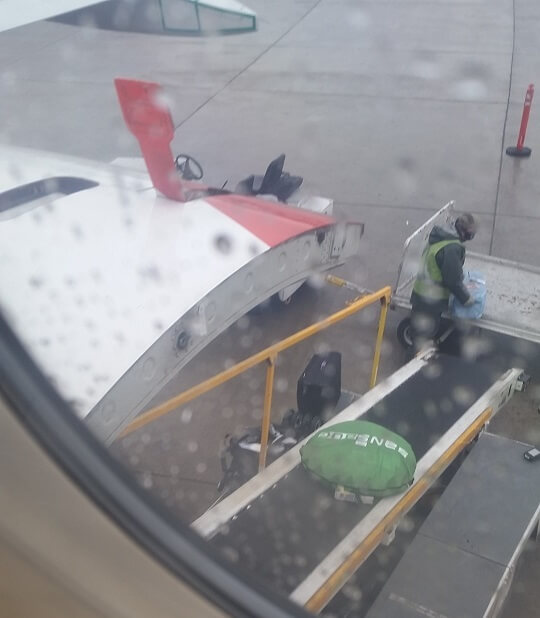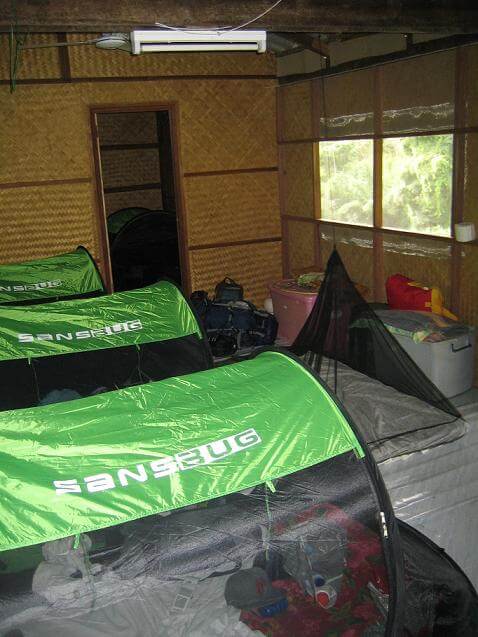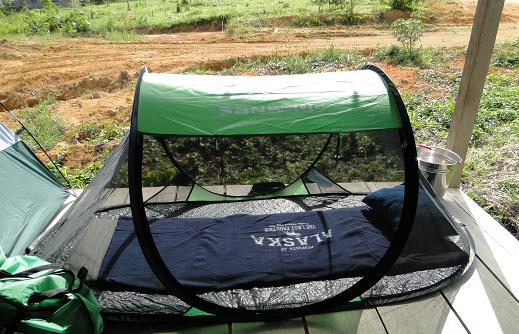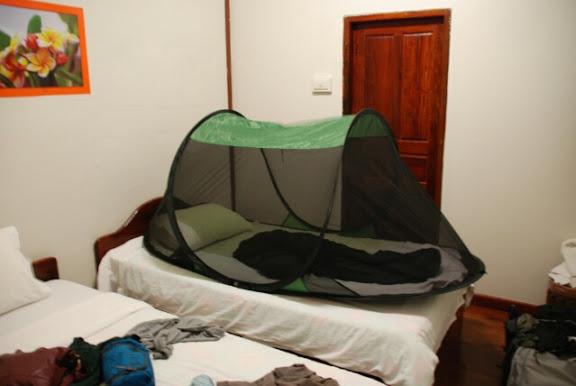
However, when it comes to transporting it, we admit that many users balk at the size. Here’s an email from a Canadian family who has traveled with the SansBugs around the world for the past 3 years:
January 9, 1438hrs: “Please be advised our office must purchase three SansBug 3-person for members going on mission overseas.”
The Mounties may always get their man but even they need protection. Three RCMP officers were deploying to Cambodia for one year to investigate crimes against humanity, war crimes and genocide committed during the Khmer Rouge regime. While interrogating witnesses in remote jungle locations, they had to deal with stubborn ants in their beds and pesky frogs in the bathroom.
2 months later: “Please be advised three of my colleagues have had the opportunity to try the tents on a mission to Cambodia. They indicated they are all satisfied with the construction and the rapidity to install the pop-up mosquito nets.”
So on one side of the world, the tents are being used to fight Ebola in Sierra Leone and on the other side of the world in Cambodia, they’re being used to bring the bad guys to justice. Not bad, eh?
Can you spot the SansBug somewhere amongst the domes of Fabedougou? The domes are limestone rocks sculpted over millenia. They are 3km north of Karfiguela Falls in Burkina Faso, West Africa.
As seen on istagram: @nicholsquarters, #sansbug #burkina.
This pic is from a very remote area – Baramita – a small mining village in the north-western part of Guyana which is only accessible by plane or a 7-day trek through the jungle! When you’re going remote, you want a mosquito net that can stand up by itself; not one that needs to be suspended. Here’s the 5/5 feedback left on Amazon:
“Very Amazing Tent – This tent is great, very light, and very, very easy to put up and take down. The instructions are difficult to read for taking the tent down so I recommend getting on YouTube and watching it there (makes it much easier)…”
Which is true… the manual is supplementary and is not a replacement for the demo video.
Wiebke from Cologne, Germany sent this picture of the SansBug mosquito net in a guesthouse in northern Laos. Her original plan was to only use it during home-stays, but she also ended up popping it open in quite a few guesthouses. It definitely set my mind at ease knowing that I would not be bitten by mosquitoes at night or find some kind of creepy crawly on my pillow when waking up.
The highlight of the trip: My fellow travelers eyed my SansBug suspiciously for the first few days, but when we spend the night in a local village and the room we were sleeping in had an ant infestation in one corner, they asked whether I would mind swapping places with them. I set my SansBug up right where the ants were and they didn’t bother me at all!
By the way, Laos is a landlocked country in Southeast Asia, bordered by Myanmar, China, Vietnam, Cambodia, and Thailand.
Danke Wiebke… Laos is one more country we can add to our list of countries visited!

“We got back last week from a great trip to Thailand. It was an amazing experience and we were so glad that we could help the locals in their daily struggle for survival. The (SansBug) mosquito (net) tents were absolutely brilliant, they helped us so much – none of us got any mosquito bites, no malaria (thank God), no scorpions, snakes, spiders, or lizards in our tents! I have attached… a picture of the hut we slept in with the tents.”
Malaria accounts for 25% of all deaths in eastern Burma. Comparitively, gunshot wounds account for 0.6%. Since malaria prevalence also increases as you move closer to the border with Burma, the BRAP team made a wise decision to take the SansBug with them. You can read more about BRAP and their work on their website.




